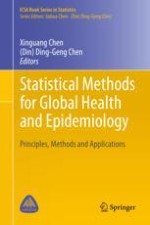2020 | OriginalPaper | Buchkapitel
6. Introduction to Privacy-Preserving Data Collection and Sharing Methods for Global Health Research
verfasst von : Guanhong Miao, Hanzhi Gao, Yan Wang, Samuel S. Wu
Erschienen in: Statistical Methods for Global Health and Epidemiology
Aktivieren Sie unsere intelligente Suche, um passende Fachinhalte oder Patente zu finden.
Wählen Sie Textabschnitte aus um mit Künstlicher Intelligenz passenden Patente zu finden. powered by
Markieren Sie Textabschnitte, um KI-gestützt weitere passende Inhalte zu finden. powered by
